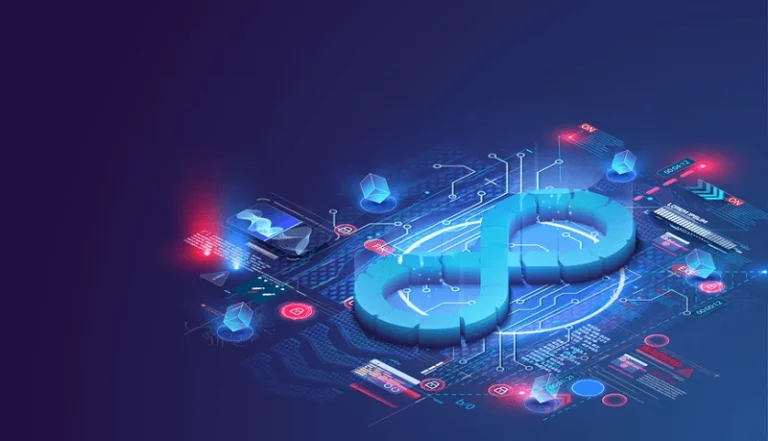Building a working IoT platform (software or hardware) will take years and millions of dollars. On top of all that development cost, you need to add support and maintenance costs. As you gain traction in the market, your focus will shift from product-market fit, into the pursuit of profitability. That is the time to invest in custom hardware for miniaturization, reduced cost of the bill of materials (BOM), longer battery life, better supply chain agreements, improved serviceability, etc. Think of an Internet of Things platform as a group of technologies that provide the building blocks for developing your product. IoT platforms provide the “infrastructure” you use to create the specific features of your solution.

Even after the ML model is in production and continuously monitored, the job continues. Business requirements, technology capabilities and real-world data change in unexpected ways, potentially giving rise to new demands and requirements. Semisupervised learning works by feeding a small amount of labeled training data to an algorithm. From this data, the algorithm learns the dimensions of the data set, which it can then apply to new unlabeled data. The performance of algorithms typically improves when they train on labeled data sets. This type of machine learning strikes a balance between the superior performance of supervised learning and the efficiency of unsupervised learning.
Implementing an IoT Platform: Best Practices and Tips
IoT devices can also be used to track medical equipment, manage inventory and monitor medication compliance. The physical objects being monitored don’t have to be manufactured—they can include objects in nature, as well as people and animals. AWS IoT provides IoT services for industrial, consumer, and commercial solutions. You can rely on AWS IoT services to build applications that uncover new business value, run sophisticated analytics and detect and respond to events from large number of IoT devices.

Keep in mind that when you are transitioning to scale, you might need to completely re-platform your product, and that’s okay. As Product Leaders, we need to set clear expectations with Executives and Investors. As your product adoption increases, it shouldn’t be a surprise to them that your team will need to spend time refactoring the product for scale, which may mean transitioning to a new set of IoT platforms to support this new stage. Most of the Cloud platforms already include analysis tools, which may be enough for many applications. As I mentioned above, the lines between the various platforms are starting to blur.
Product digitalization
It provides organizations with a real-time look into how their systems really work, delivering insights into everything from the performance of machines to supply chain and logistics operations. The future of IoT is exciting, with many new developments and innovations on the horizon, with providers of devices offering attractive pricing, as the cost of IoT device production declines. As the number of IoT devices continues to grow, businesses will need to be prepared to adapt to new technologies and embrace new use cases and applications. Those that are able to do so will be well-positioned to reap the benefits of this transformative technology. In an enterprise context, IoT devices are used to monitor a wide range of parameters such as temperature, humidity, air quality, energy consumption and machine performance. This data can be analyzed in real time to identify patterns, trends and anomalies that can help businesses optimize their operations and improve their bottom line.

M2M refers to connecting a device to the cloud, managing it and collecting data. Because IoT devices are closely connected, a hacker can exploit one vulnerability to manipulate all the data, rendering it unusable. Manufacturers that don’t update their devices regularly — or at all — leave them vulnerable to cybercriminals. Additionally, connected devices often ask users to input their personal information, including names, ages, addresses, phone numbers and even social media accounts — information that’s invaluable to hackers. Wearable devices with sensors and software can collect and analyze user data, sending messages to other technologies about the users with the aim of making users’ lives easier and more comfortable.
IoT Platforms: What They Are & How To Select One
IoT platforms provide a huge amount of value to businesses – allowing them to lower development costs, accelerate launch and streamline processes. However, many people are still unclear on what an IoT platform is exactly, what they do, and when a business should use one. IoT platforms provide a head start in building IoT systems by providing built-in tools and capabilities to make IoT easier and cheaper for businesses, developers, and users.
- Siemens has successfully implemented an IoT platform to optimize industrial automation processes.
- Intelligent asset management, monitoring, predictive maintenance and reliability in a single platform.
- As Product Leaders, we need to set clear expectations with Executives and Investors.
- Ambient intelligence and autonomous control do not necessarily require Internet structures, either.
From remote patient monitoring to smart medical devices, IoT platforms enable real-time data collection, analysis, and personalized healthcare services. This leads to improved patient outcomes, reduced hospital readmissions, and enhanced overall healthcare quality. For companies to implement and develop IoT services for smart cities, they need to have incentives.
Digitize workflows and improve connectivity with Tulip’s Frontline Operations Platform
However, progress was initially slow because the chips were big and bulky. Low power computer chips called RFID tags were first used to track expensive equipment. As computing devices shrank in size, these chips also became smaller, faster, and smarter over time. GEPredix provides a complete solution for data monitoring and management. It is unique in its understanding of manufacturing operations, providing centralized visibility, enhanced analysis, and analysis capabilities for monitoring, exception handling, and decision-making in a single platform. An advanced analytics platform is a form of PaaS, a data-driven IoT platform.
AWS IoT includes services like security, data encryption, and access control to device data. It is built on secure and proven cloud infrastructure and IoT networks and scales to billions of devices and trillions of messages. AWS IoT also integrates with other AWS services so you can create complete solutions. Analyze the platform’s analytics capabilities to ensure it meets your business needs. Look for features such as real-time analytics, machine learning, and predictive analytics.
Understanding the Core Components of an IoT Platform
Even though you just have a small enterprise cloud platforms can grow with you and your IoT systems. Set and adjust hyperparameters, train and validate the model, and then optimize it. Depending on the nature of the business problem, machine learning algorithms can incorporate natural language understanding capabilities, such as recurrent neural networks or transformers that are designed for NLP tasks.

By processing data at the edge of the network, closer to the devices, edge computing reduces latency, improves response times, and reduces the reliance on cloud infrastructure. This trend enables real-time decision-making and enhances the overall performance and efficiency of IoT platforms. It involves collecting, storing, and processing the vast amounts of data generated by IoT devices. An effective IoT platform should be able to handle real-time data streams, perform data analytics, and provide actionable insights. It should also have robust data storage capabilities, ensuring the data is securely stored and easily accessible for future use. While connectivity and data acquisition are imperative for IIoT, they are not the end goals, but rather the foundation and path to something bigger.
Complexity of Integration
It allows machines to do more heavy lifting, take over tedious tasks and make life more healthy, productive, and comfortable. The GS1 digital link standard,[196] first released in August 2018, allows the use QR Codes, GS1 Datamatrix, RFID and NFC to enable various types of business-to-business, as well as business-to-consumers interactions. Security is crucial to any IoT system, and the IoT platform must ensure that every aspect is safe and correct. Not only that, but the IoT platform also gives you a build framework so you don’t have to build an IoT system from scratch.
Questions should include why the project requires machine learning, what type of algorithm is the best fit for the problem, whether there are requirements for transparency and bias reduction, and what the expected inputs and outputs are. In supervised learning, data scientists supply algorithms with labeled training data and define the variables they want the algorithm to assess for correlations. Both the input and output of the algorithm are specified in supervised learning. Initially, most machine learning algorithms worked with supervised learning, but unsupervised approaches are becoming popular. Deep learning is a subfield of ML that deals specifically with neural networks containing multiple levels — i.e., deep neural networks.
What is Smart Logistics: The Definitive Guide
Building and maintaining IoT applications involves technical expertise, time and resources. An IoT platform with application enablement features can help remove the resource technical hurdles to building and deploying applications. With these factors in mind, the fastest, most sustainable path to IoT artificial intelligence machine learning innovation is not to buy or to build—it’s to buy and build. Buying a flexible IoT platform delivers the foundation for innovation and differentiation. Ready-to-use solutions help you achieve strategic business outcomes fast, while intuitive tools enable you to easily build your own services on top.
